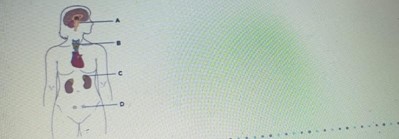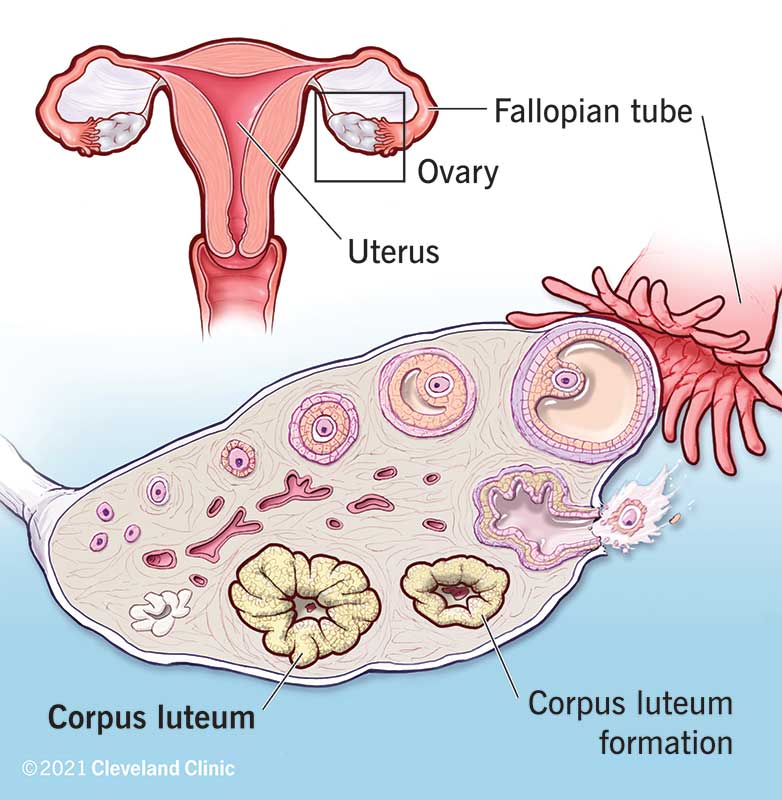Which of the following endocrine organs in the diagram below is involved in regulating milk production following childbirth?

Pituitary gland
Thyroid gland
Adrenal glands
Ovaries
Correct Answer : A
Lactation is stimulated by a hormone called prolactin, which is produced by the pituitary gland. The pituitary gland is a small, pea-sized organ located at the base of the brain.
TEAS 7 Exam Quiz Bank
HESI A2 Exam Quiz Bank
Find More Questions 📚
Teas 7 Questions: We got the latest updated TEAS 7 questions
100% Money Refund: 100% money back guarantee if you take our full
assessment pass with 80% and fail the actual exam.
Live Tutoring: Fully customized live tutoring lessons.
Guaranteed A Grade: All students who use our services pass with 90%
guarantee.
Related Questions
Correct Answer is A
Explanation
Among the four types of microorganisms listed, only viruses lack their own metabolic pathways and can only reproduce inside of a host cell. Viruses are considered to be obligate intracellular parasites, meaning that they depend on another living cell for their survival and replication. Bacteria, helminths, and protozoa, on the other hand, are able to metabolize nutrients and energy from their surroundings and can reproduce independently of a host cell.
Correct Answer is B
Explanation
The process in which an ovarian follicle matures and releases a reproductive egg is called ovulation. Ovulation is one of the phases of the menstrual cycle, which also includes follicular phase, luteal phase and menstruation
Correct Answer is B
Explanation
Corpus luteum. The corpus luteum is a temporary structure that forms from the ruptured follicle after ovulation. It produces progesterone, which is a hormone that prepares the endometrium (the inner lining of the uterus) for implantation of a fertilized egg. If pregnancy occurs, the corpus luteum continues to secrete progesterone until the placenta takes over.

Correct Answer is C
Explanation
The glomerulus is a microscopic structure located within the nephron of the kidney and is essential for the filtration of blood. The glomerulus is a network of capillaries (tiny blood vessels) that filters blood to remove waste products, excess substances, and fluid, which are then passed on to the renal tubules for further processing into urine.
- Microscopic function: Blood enters the glomerulus through the afferent arteriole, where the blood pressure forces water, ions, small molecules, and waste products out of the blood and into a structure called Bowman’s capsule (the next component of the nephron). This process is the first step in urine formation.
- Anatomy: The glomerulus is a highly specialized structure designed for filtration, with tiny pores in the capillary walls that allow small molecules to pass while larger molecules (like proteins and blood cells) remain in the bloodstream.
Explanation of the other options
A. Loop of Henle
The Loop of Henle is part of the nephron in the kidneys. It is located between the proximal and distal convoluted tubules and plays a crucial role in the process of urine concentration. The loop has both a descending and an ascending limb and is responsible for creating a concentration gradient in the renal medulla, which is essential for the kidneys to concentrate urine.
While it is part of the nephron and operates on a microscopic scale, it is not the primary microscopic component involved in filtration. Rather, it functions in reabsorption and the regulation of water and salt balance.
B. Ureter
The ureter is a macroscopic organ that connects the kidneys to the bladder. It is a muscular tube through which urine travels after being produced in the kidneys. The ureter is not considered a microscopic structure because it can be seen with the naked eye. It plays a major role in the transport of urine, but it is not involved in the filtration or microscopic processes within the kidneys.
D. Bowman’s Capsule
The Bowman’s capsule is a cup-shaped structure that surrounds the glomerulus. It is an important part of the nephron in the kidney. The role of Bowman’s capsule is to collect the filtrate (the fluid that has been filtered out of the blood in the glomerulus).
- Function: The Bowman’s capsule captures the filtrate (containing water, salts, glucose, urea, etc.) and channels it into the proximal convoluted tubule for further processing.
- Microscopic structure: While the Bowman’s capsule is part of the nephron and plays a key role in the filtration process, it is considered a structure that "contains" the glomerulus rather than being the structure that performs the filtration itself.
Thus, the glomerulus is the most accurate answer when identifying a microscopic component of the genitourinary system involved in filtration.
Correct Answer is C
Explanation
Genes are used in techniques like DNA sequencing to determine a person's DNA sequence. DNA sequencing involves determining the order of nucleotides (A, T, C, and G) in a DNA molecule. Genes are used to replicate and amplify DNA segments, allowing researchers to analyze the sequence of nucleotides present in a person's DNA
Correct Answer is D
Explanation
Terminal velocity is the maximum speed achieved by an object freely falling through a gas or liquid. At terminal velocity, the forces acting on the object are balanced so it is no longer accelerating. Terminal velocity is achieved when the force of gravity is equal to air resistance. From the data table you provided, we can see that as the mass of the coffee filters increases, so does the terminal velocity. This means that heavier objects fall faster than lighter objects. Therefore, conclusion D is supported by the data in the table.
Correct Answer is C
Explanation
The cytoskeleton of a cell is a complex network of filaments and tubules that provides structural support, shape, movement, and organization to the cell and its components.
The cytoskeleton is composed mainly of proteins, which are macromolecules made of amino acids linked by peptide bonds. The three main types of proteins that form the cytoskeleton are microtubules, microfilaments, and intermediate filaments. Each type has a different structure, function, and distribution within the cell.
Correct Answer is C
Explanation
Erythropoietin is a hormone that is produced by the kidneys and stimulates the production of red blood cells in the bone marrow. Red blood cells contain hemoglobin, a protein that binds to oxygen and transports it to the tissues. Therefore, erythropoietin helps to maintain adequate oxygen levels in the blood and prevent anemia.
Correct Answer is A
Explanation
A phase diagram is a graphical representation of the physical states of a substance under different conditions of temperature and pressure. A phase diagram usually has pressure on the y-axis and temperature on the x-axis. As we move along the curves of the phase diagram, we can see how the state of the substance changes from solid to liquid to gas, or vice versa.
Correct Answer is A
Explanation
When a solid turns into a liquid during the process of melting, the particles within the solid gain enough energy to overcome the attractive forces holding them in a fixed arrangement. As a result, the particles become less ordered and more mobile, transitioning from a rigid structure to a more fluid state.
This question was extracted from the actual TEAS Exam. Ace your TEAS exam with the actual TEAS 7 questions, Start your journey with us today
Visit Naxlex, the Most Trusted TEAS TEST Platform With Guaranteed Pass of 90%.
Money back guarantee if you use our service and fail the actual exam. Option of personalised live tutor on your area of weakness.
